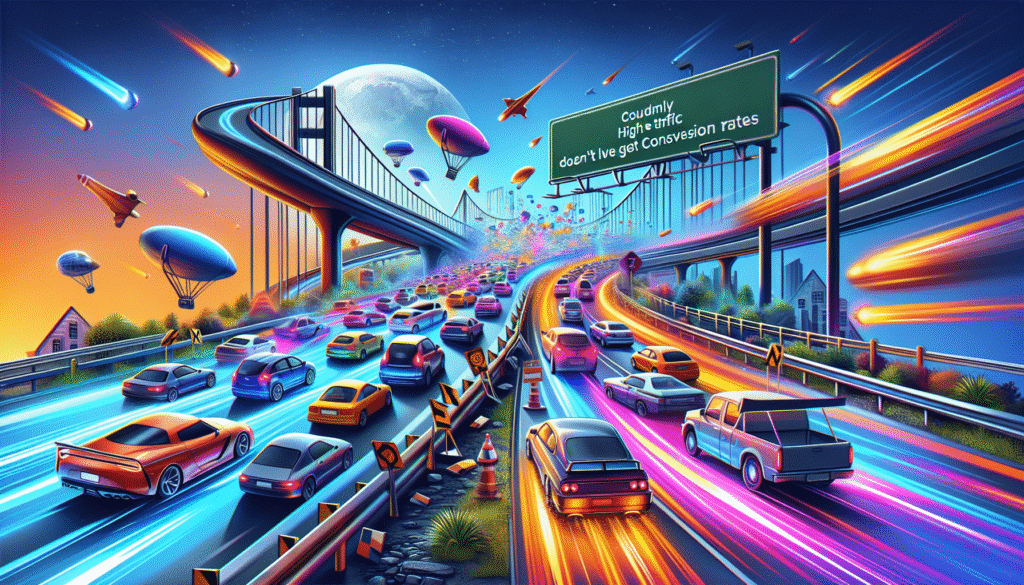Have you ever wondered why some of those “top-converting” offers just don’t seem to perform as expected, even with a flood of traffic? We’ve all been there, watching analytics as endless streams of visitors pour onto a page while conversions trickle in like a snail stuck in molasses. It’s enough to make us question the very metrics and strategies we thought were foolproof.

Understanding the “Top-Converting” Label
Let’s start by dissecting what “top-converting” means. It’s a hot term in the marketing world, one that promises incredible returns. Typically, we look at conversion rates as the percentage of visitors who take a desired action, such as making a purchase or signing up for a newsletter. This metric gives us a glimpse into how effectively a webpage or offer is performing. However, what truly defines a “top-converting” offer varies greatly across industries and platforms. So, how do we find ourselves misled by so-called “top-performing” deals?
The Illusion of High Traffic
High traffic can feel like a marketer’s dream come true, yet it’s not always a silver bullet for success. To understand why traffic alone doesn’t save these offers, we need to first look at the relationship between traffic volume and quality. While it’s invigorating to see a spike in visits, it matters little if the traffic isn’t targeted or interested in the offer presented.
Imagine bringing an ocean into your backyard, only to find it filled with species that don’t thrive on land. This is often the scenario with poorly matched traffic to offers.
Traffic Quality vs. Quantity
The quality of traffic refers to how well the audience aligns with the objectives of a campaign. High-quality traffic consists of visitors who are genuinely interested in what we have to offer and are more likely to convert. On the flip side, high quantity without relevant quality often results in bouncing visitors and lower conversion rates. Our attention, therefore, should pivot from just increasing numbers to attracting the right audience.
| Traffic Parameter | Quality Traffic | High-Volume Traffic |
|---|---|---|
| Audience Interest | High | Low to varied |
| Conversion Rate | Higher likelihood of conversion | Lower likelihood of conversion |
| Interaction Time | More extended engagement | Brief, often resulting in higher bounce rate |
| Source of Traffic | Targeted marketing, strategic SEO, etc. | Broad, often driven by generic promotions |
Why Traffic Didn’t Save Certain Offers
Let’s delve into the distinct reasons traffic on its own failed to bring salvation to these top-converting offers.
Misalignment with Audience Needs
An offer might be described as “top-converting” based on historical or contextual results. However, if it doesn’t align with the current needs or desires of our audience, it could struggle. This misalignment often results from a disconnect between market research and execution. To remedy this, we need to continuously engage with our target demographic and adapt our offers to better meet their evolving requirements.
Poor Landing Page Experience
First impressions do matter. When traffic arrives at a poorly optimized landing page, it could dismantle conversion potential quickly. Whether it’s a slow loading time, cluttered design, or confusing calls to action, the landing page experience is crucial. The goal is to design a seamless path to conversion, one that captivates and guides visitors effortlessly.
Offer Timing and Relevance
Timing is everything in marketing. It’s not enough for an offer to be appealing; it must also be timely and relevant. Seasonal trends, economic transformations, or shifting consumer behavior can all impact the appeal and conversion rate of an offer. To improve timing, a proactive approach involving predictive analytics and trend forecasting should be employed.

Learning from Failure: Crafting Effective Offers
Understanding why certain offers don’t perform despite significant traffic can help us craft more effective future campaigns. Let’s explore how we can learn from these challenges and move forward with stronger offers.
Identifying the Target Audience
Accurate identification of our target audience aids in tailoring offers that resonate. More than just demographics, we need to delve into psychographics—understanding our audience’s values, desires, and motivations. This means going beyond mere identity markers and tapping into the emotions that drive their purchasing decisions.
Personalization and Customization
Today’s consumers crave personalization. Offers that appear generic are likely to be overlooked. By leveraging data-driven insights, we can create customized experiences that speak directly to individuals. Think of it as crafting a personal note instead of sending a mass email—every touchpoint matters.
Engaging Storytelling
Beyond features and benefits, compelling storytelling can forge a strong connection with our audience. Storytelling allows us to resonate emotionally, creating a memorable narrative around our offers. Imagine a brand like Patagonia, not just selling outdoor gear but weaving a story of environmental commitment and adventure.
Optimizing the Conversion Funnel
A comprehensive understanding and continual optimization of the conversion funnel is necessary. Each stage should be regularly examined for friction points that might cause users to abandon the process. Split testing, user feedback, and analytics can provide insights for refinement.
| Conversion Funnel Stage | Questions to Consider for Optimization |
|---|---|
| Awareness | Are we attracting the right audience? |
| Interest | Is our value proposition clear and compelling? |
| Desire | Do our offers evoke a genuine need or want? |
| Action | Is it easy and intuitive for users to convert? |
| Retention | How do we maintain engagement and encourage loyalty? |
Acknowledging Current Trends
Adapting to new marketing trends can bridge the gap between high traffic and high conversions. Let’s take a closer look at these evolving trends and how they can help transform our offers.
Interactive Content
Static content is giving way to interactive experiences. Quizzes, polls, and interactive infographics can heighten engagement, offering a dynamic way for visitors to connect with content and, ultimately, our offers.
Conversational Marketing
Today’s consumers prefer direct and real-time conversations. Chatbots, messaging apps, and live chats enable conversational marketing, facilitating immediate engagement and addressing queries in a personable manner.
Influencer Collaborations
Influencers provide a bridge to a loyal audience and can add credibility to our offers. By carefully selecting influencers aligned with our brand values and audience, we can foster authentic connections that drive conversions.
The Final Word
As we reflect on why high traffic didn’t save these top-converting offers, it’s evident that success is about more than just numbers. We must align high traffic with quality, relevance, and value to drive meaningful engagement and conversions. Through thoughtful analysis, personalization, and responsiveness to the marketplace, we can transform once bewildering challenges into triumphant opportunities. Let’s not only invite traffic but also welcome it with offers that are as irresistible as they are impactful.
